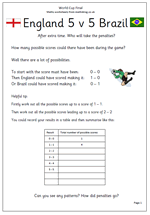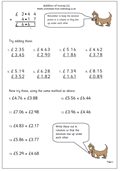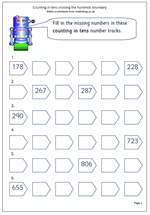![]() Children are used to reading scales where the divisions go up in ones, but they find it much harder when either they go up in larger numbers or when not all the divisions are numbered. Next week we are publishing a measuring worksheet which does both of these. The ruler shown is a scale drawing and each division is 10 cm, but only the 100 cm division lines are named.
Children are used to reading scales where the divisions go up in ones, but they find it much harder when either they go up in larger numbers or when not all the divisions are numbered. Next week we are publishing a measuring worksheet which does both of these. The ruler shown is a scale drawing and each division is 10 cm, but only the 100 cm division lines are named.
Multiples of ten are fairly easy to work out, but nevertheless practice makes perfect and coming up soon is a great game of strategy to play to help reinforce multiples of 10.
We will also be sending up a straightforward mental arithmetic page on adding decimals for Year 6. The process is very much the same as adding two 2-digit whole numbers. When adding in our heads we usually start with the largest numbers, which, of course, is the opposite of the way we do it on paper. This needs pointing out to children as many, even in Year 6, lack the strategies necessary for mental addition.


